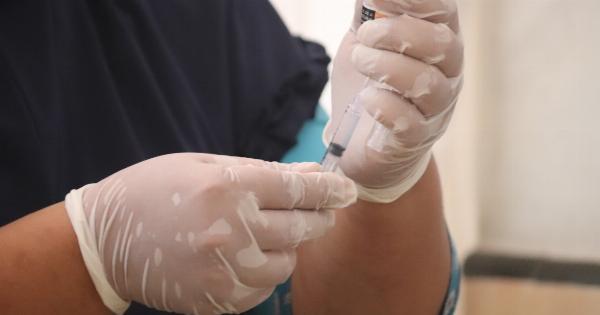A meniscus tear is a common knee injury that can cause pain, swelling, and limited mobility. The meniscus is a C-shaped piece of fibrocartilage that acts as a shock absorber between the thighbone (femur) and the shinbone (tibia).
Each knee joint has two menisci – one on the inner side (medial meniscus) and one on the outer side (lateral meniscus). When this cartilage is torn, it can result in significant discomfort and can affect the knee’s ability to function properly. This article explores the symptoms, diagnosis, and treatment options for a meniscus tear.
Symptoms of a Meniscus Tear
In most cases, a meniscus tear is caused by a twisting or rotating movement of the knee, especially when the foot is firmly planted on the ground. The severity of symptoms may vary depending on the type and location of the tear.
Common signs and symptoms of a meniscus tear include:.
1. Knee pain: Pain in the knee joint, which can range from mild to severe, is one of the primary symptoms of a meniscus tear. The pain may worsen when bending or straightening the knee or during physical activities.
2. Swelling: A meniscus tear can lead to knee swelling, which may occur within a few hours after the injury or gradually over a couple of days. The swelling is usually localized in the front, back, or sides of the knee joint.
3. Stiffness: Patients with a meniscus tear often experience stiffness in the knee joint. The knee may feel locked or difficult to fully extend or flex.
4. Clicking or popping sensations: If the torn meniscus fragment becomes caught between the bones, it can produce a clicking or popping sensation during movement.
5. Limited range of motion: A meniscus tear can restrict the knee’s full range of motion. Activities like squatting, kneeling, and pivoting can become challenging or painful.
It’s important to note that some individuals with a meniscus tear may not experience any symptoms initially. However, over time, the tear may worsen, leading to the development of symptoms.
Diagnosis of a Meniscus Tear
When a meniscus tear is suspected, a healthcare professional will conduct a thorough evaluation to make an accurate diagnosis. The diagnostic process for a meniscus tear typically involves:.
1. Medical history and physical examination: The doctor will inquire about the patient’s symptoms, the circumstances surrounding the injury, and any prior knee problems.
They will then perform a physical examination, checking for tenderness, swelling, and signs of limited motion.
2. Imaging tests: X-rays are usually the first imaging test performed to rule out any other potential causes of knee pain, such as a fracture or arthritis. However, as the meniscus is composed of soft tissue, an X-ray alone will not show the tear.
In cases where the meniscus tear is suspected, an MRI scan is the most effective imaging test. The MRI provides detailed images of the knee joint, allowing the doctor to visualize the meniscus and assess the extent and location of the tear.
Treatment Options for a Meniscus Tear
The suitable treatment for a meniscus tear depends on several factors, including the type and location of the tear, as well as the patient’s age, activity level, and overall health. Treatment options for a meniscus tear may include:.
1. Conservative treatment: In cases where the tear is small and there are minimal symptoms, conservative treatment methods may be sufficient.
These can include rest, avoiding activities that worsen the knee pain, using ice packs, and taking over-the-counter pain relievers to manage pain and reduce inflammation.
2. Physical therapy: Physical therapy aims to improve knee strength, flexibility, and stability. A physical therapist will design an individualized exercise program to restore knee function and reduce pain caused by a meniscus tear.
Therapy may include stretching exercises, low-impact activities, and muscle-strengthening exercises.
3. Knee braces: Depending on the type and severity of the tear, a knee brace may be recommended to provide stability and support to the joint. The brace limits movements that may further damage the torn meniscus and can aid in the healing process.
4. Arthroscopic surgery: In cases where conservative treatments do not alleviate the symptoms or for more severe meniscus tears, surgical intervention may be necessary.
Arthroscopic surgery is a minimally invasive procedure performed using small incisions and a tiny camera (arthroscope). The surgeon trims or repairs the torn meniscus, aiming to preserve as much of the healthy meniscus as possible.
After the surgery, a rehabilitation program may be recommended to ensure proper healing, regain strength, and restore function to the knee joint.
Preventing Meniscus Tears
Although it may not be possible to prevent all meniscus tears, there are strategies to reduce the risk of injury:.
1. Warm-up and cool-down: Engage in appropriate warm-up exercises before any physical activity to prepare the muscles and joints. Cooling down after exercise helps gradually return the body to its resting state.
2. Strengthening exercises: Regularly perform exercises that strengthen the muscles around the knee, such as quadriceps and hamstring exercises, to provide better support and stability.
3. Proper technique: Practice correct techniques when engaging in sports or activities that involve repetitive pivoting or twisting movements, as incorrect form can increase the risk of injury.
4. Use protective gear: When participating in high-risk sports or activities, use appropriate protective gear, such as knee pads or braces, to reduce the impact on the knee joint.
In Conclusion
A meniscus tear is a common knee injury that can result in pain, swelling, and restricted knee function. Prompt diagnosis and appropriate treatment are crucial for optimal recovery.
If you suspect a meniscus tear, consult a healthcare professional who can provide an accurate diagnosis and develop an individualized treatment plan. Through proper management and rehabilitation, individuals with a meniscus tear can regain their knee’s functionality and return to their normal activities.
























